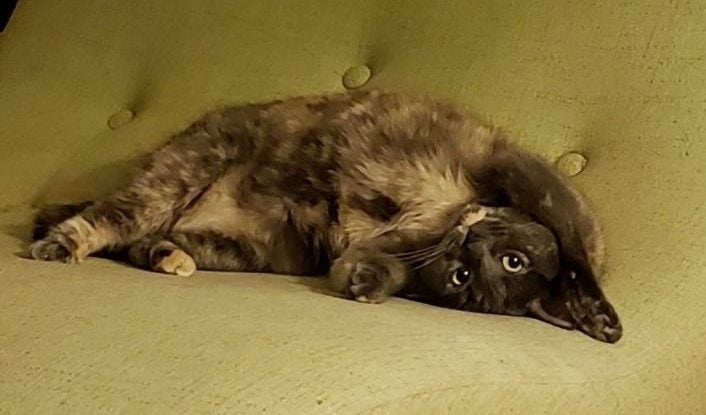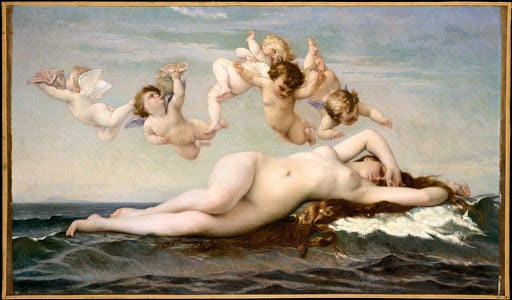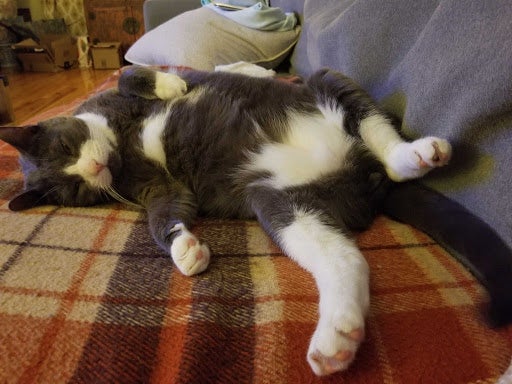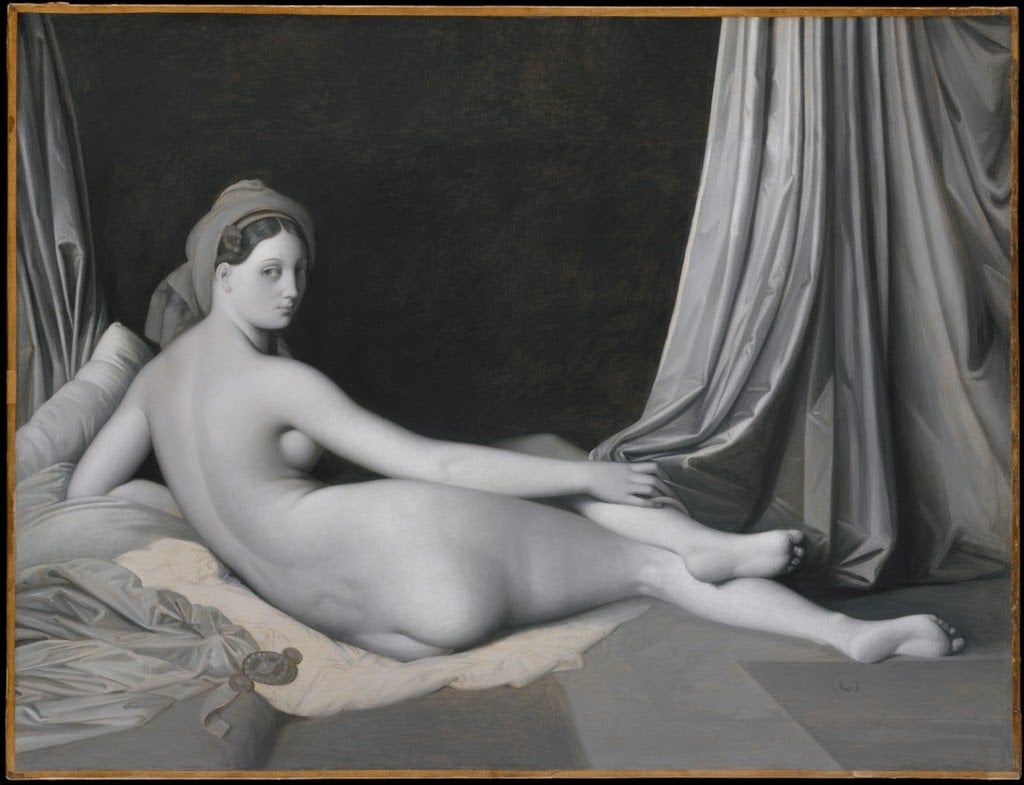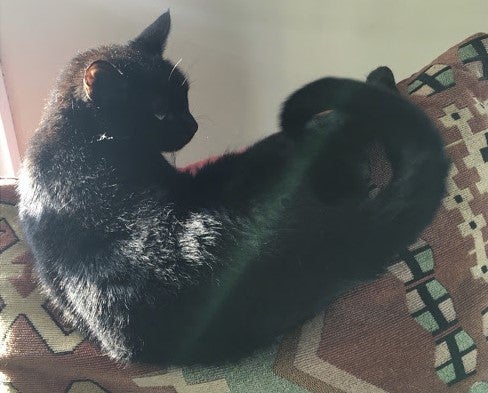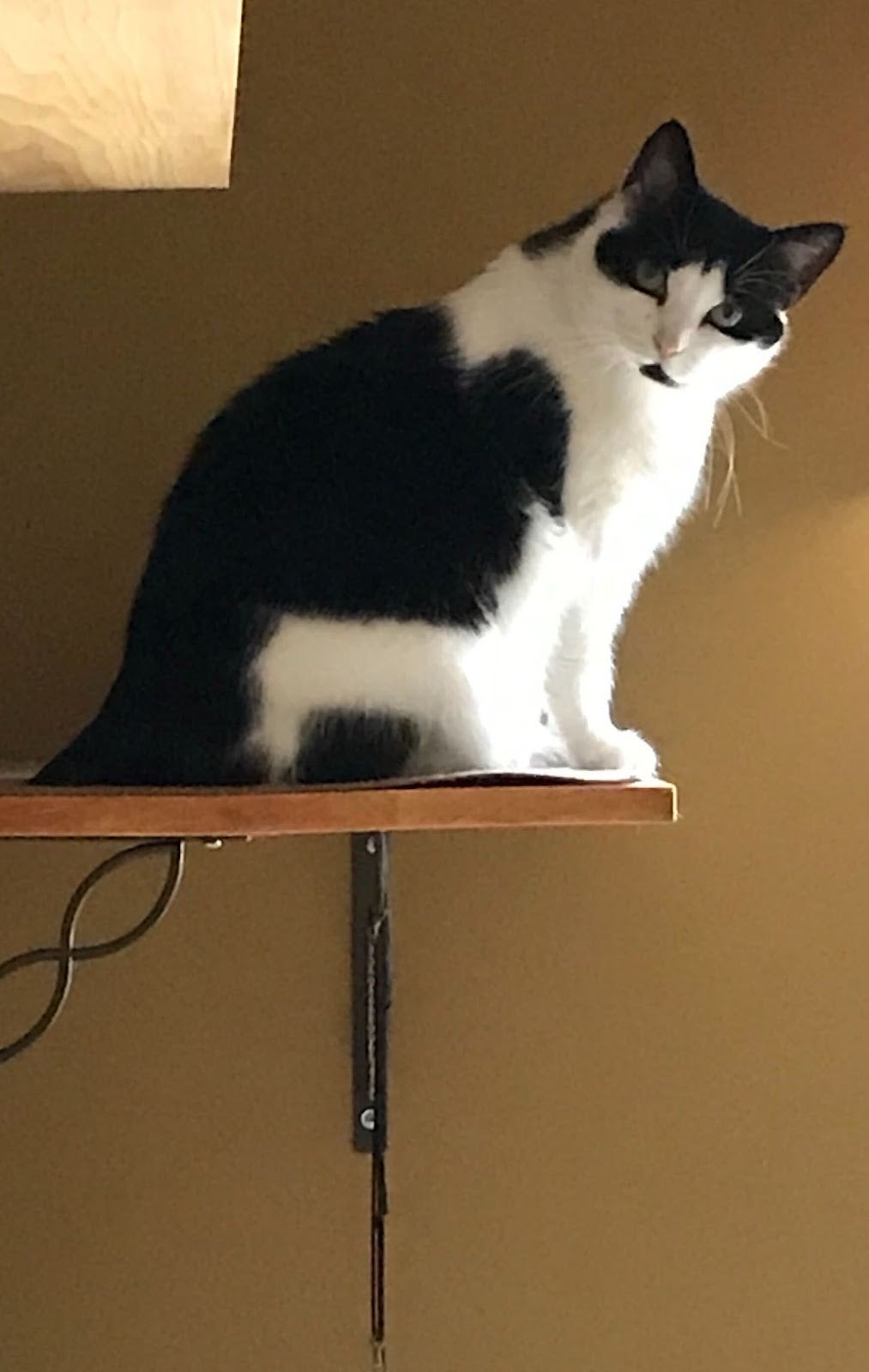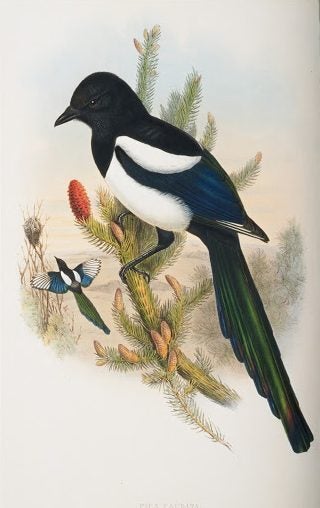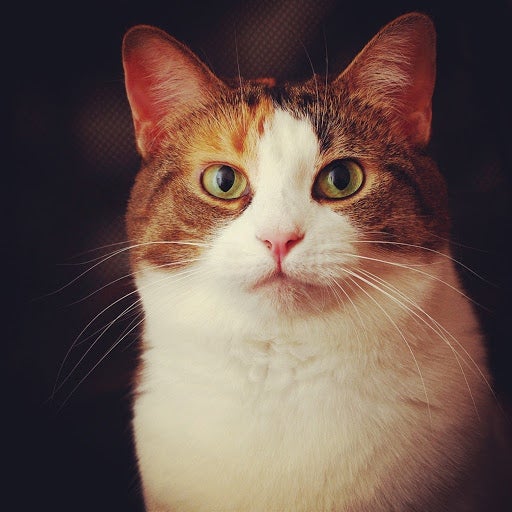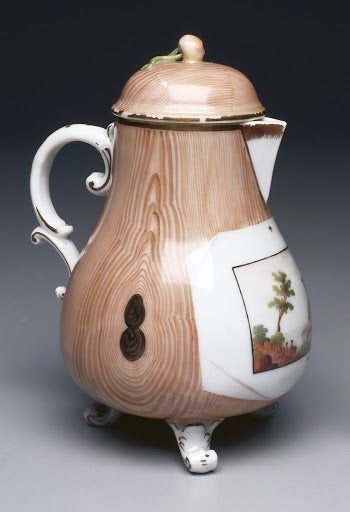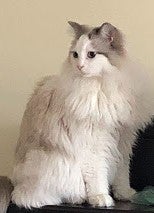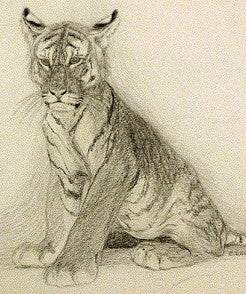Throughout the months of lockdown our beloved felines have enhanced the quality of our diminished lives, and we, in turn, have come to know them a little better. My colleagues have generously shared portraits of their best feline friends and we have taken the liberty of juxtaposing them to works represented in JSTOR. (Be sure and check out the canine version of this post designed to honor our dog friends.)
The luxuriating kitty at rest is without a doubt the most common motif among our cats who assume endless variations on the sleep pose. Our first interpretation of the theme – Lizzie gains a new perspective – inspires thoughts of The Birth of Venus by Alexandre Cabanel, most notably where both heroines languidly drape a limb over their heads.
In another reprise, Bowie (“Tomorrow belongs to those who can hear it coming”) surrenders to a deep slumber revealing a tantalizing tummy, seemingly in a reverie as in Jacob’s Dream, by Fetti, while another, Twinks en détente, assumes the odalisque mode so recognizable from the paintings of Ingres.
The body language of the alert, upright, watchful cat is the perfect foil to cat-at-rest: the splendid subject of Meet my beautiful office manager, Magpie, epitomizes his name in balanced proximity to his avian alter ego; Chicken is more owl than fowl in For Chicken, every virtual meeting is part of a “camera on day”; and not to be outdone, Gilbert waits patiently, assuming the posture of a French faience vessel.
No celebration of our felines would be complete without a consideration of their extraordinary attire. After all, our cats are the best-dressed members of our families. Tula at the window is every bit as resplendent in her natural coat as the young woman in Sunday Morning by Jacques Tissot, an artist revered for his renderings of couture.
The sitter in Harry using the blank look also evokes sartorial splendor with the ultimate ensemble, complete with a dove-grey cap. While Harry may contrast outwardly to the Tiger cub to whom he is compared, appearances can be deceiving. Lest we forget, even our most pampered felines never deny their inner tigers.
– Nancy Minty, Collections editor
Reading from JSTOR:
Arluke, Arnold, and Lauren Rolfe. The Photographed Cat: Picturing Close Human-Feline Ties 1900-1940. Syracuse, New York: Syracuse University Press, 2013. doi:10.2307/j.ctt1j5d9db. jstor.org/stable/j.ctt1j5d9db.
Brown, Sarah. The Cat: A Natural and Cultural History. Princeton; Oxford: Princeton University Press, 2020. doi:10.2307/j.ctvpwhfq5. jstor.org/stable/j.ctvpwhfq5.
Miyao, Daisuke. Cinema Is a Cat: A Cat Lover’s Introduction to Film Studies. Honolulu: University of Hawai’i Press, 2019. doi:10.2307/j.ctv105b9rv. jstor.org/stable/j.ctv105b9rv.
